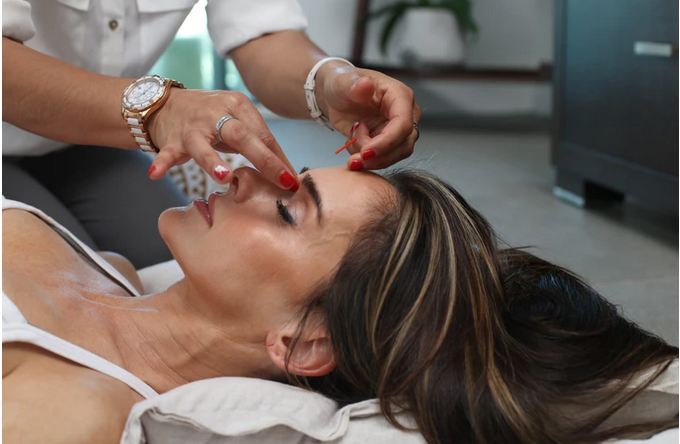Acne is not caused by dirt, though careful attention to hygiene helps to keep inflammation at bay.
A trial done in Singapore a few years ago points to acne being caused by the failure of the body to break down and metabolize oil in the body.
Why does this happen?
According to an article published by Lit-Hung Leung, MD in the Journal of Orthomolecular Medicine Vol. 12, Number 2, 1997, when the particular vitamin that is responsible for the job of metabolizing the oil is needed by the body for a different function such as the development of the sex organs, e.g., a deficiency is created and there is not enough of this vitamin to do both jobs. This is why acne often shows up at puberty.
While deficiency syndromes are by and large dismissed by the main stream medical profession, Linus Pauling, in his book, How to Live Longer and Feel Better, challenges the assumption that vitamins are not needed in large amounts and provides proof through his studies of animals that optimal amounts of vitamins are needed for optimal health.
For instance, he believes that Vitamin C is needed in far greater amounts by the body than most health practitioners would believe.
In the trial conducted in Singapore, pantothenic acid was given to acne sufferers at the rate of 10 grams a day divided into four equal doses. At the same time the patients were required to apply a pantothenic cream to the acne.
Within a few days there was a marked reduction in the amount of oil, or sebum being secreted and after 2 weeks the acne started to heal visibly, with less new pimples appearing. In most cases, the acne was completely healed by the end of 2 months, and flare-ups were reduced considerably.
An unexpected bonus was that the enlarged pores of the face began to shrink and the skin became much finer. It was found that if the patient was an adolescent, a maintenance dose was needed until the sexual characteristics had been fully developed.
That pantothenic acid is found to be present in all tissues of the body is an indication of its importance. VitaCure B5 ClearSkin is the acne product that resulted from the above trials.
Benzoyl peroxide is the main ingredient found in many over-the-counter products for treating acne. The label should be read carefully to find out how much of this chemical is actually in the product.
When trying these for the first time, it is advisable to start off with the lowest dose, or skin irritation could occur, exacerbating the problem. 2.5% is usually the lowest dose and this can also cause the skin to become dry and irritated, but this problem will mostly clear up after a few days. These products are meant to be used over the whole area affected by acne, so dont just dab it on single zits.
Zinc gluconate is another herbal type of remedy for acne. It should be taken orally.
If after two months of trying herbal products the acne has not improved, a doctor’s advice should be sought.

